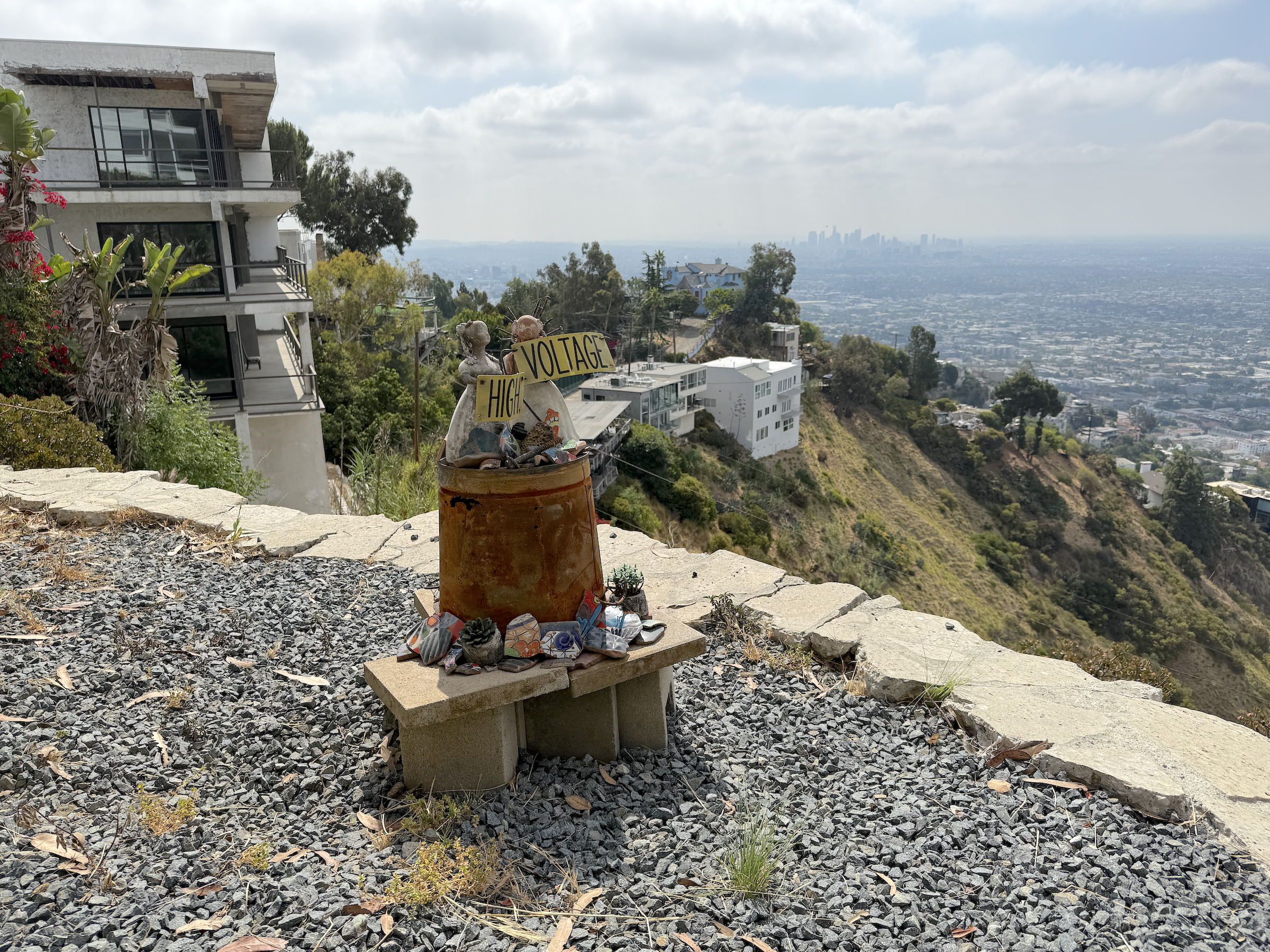
LOS ANGELES — After more than four decades, Barbara Carrasco’s 80-foot-long mural “L.A. History: A Mexican Perspective” is finally getting a permanent home. The painting was initially commissioned for the city’s bicentennial in 1981 by the Community Redevelopment Agency (CRA), which eventually rejected the work on the grounds that several scenes were too controversial. This weekend, the mural will be unveiled as one of the main attractions of NHM Commons, a new wing of the Natural History Museum of Los Angeles County.
“I’m just really grateful,” Carrasco said, beaming, at a press event on Wednesday, November 13.
After receiving the commission for the mural in 1981, Carrasco engaged in months of research to select her subject matter, consulting with Bill Mason, the NHM’s in-house historian at the time, who gave her access to the museum’s vast photographic archives. He told her that the Spanish named the city “El Pueblo de la Reina de Los Ángeles” (“The Town of the Queen of the Angels”), a detail that became the mural’s conceptual framework: 51 scenes from the city’s history embedded in the flowing locks of a proud, brown-skinned female figure modeled on the artist’s sister.

Working with three assistants — Glenna Avila, Rod Sakai, and Yreina D. Cervantez — and a team of young artists from Los Angeles County’s Summer Youth Employment Program, Carrasco portrayed the area’s original inhabitants, the Gabrielino/Tongva people; episodes from its Spanish and Mexican history; and notable figures and events, both well known and unheralded, painful and celebratory, that have marked its transformation into the heterogeneous, sprawling metropolis it is today.
The mural showcases the city’s diversity, including depictions of LA’s first synagogue; Jewish baseball player Sandy Koufax; Chinese immigrants building the railroads; Pio Pico, the last Mexican governor of California; snapshots from Japanese-American concentration camps; and Biddy Mason, a formerly enslaved woman who became one of LA’s most prominent landowners.

The CRA deemed 14 of the 51 scenes too controversial, including those illustrating the 1871 lynching of 22 Chinese men and boys; the displacement of families in Chavez Ravine to make way for the Dodger Stadium; the 1943 Zoot Suit Riots, in which US servicemen attacked Latino pachucos in downtown LA; and the whitewashing of David Alfaro Siqueiros’s 1932 mural “America Tropical,” an indictment of US imperialism depicting a crucified Indigenous figure. (Siqueiros’s mural was restored by the Getty in 2012.) Mason’s portrait was also considered inappropriate by the agency.
When they asked her to remove the images, Carrasco refused. “She’s too tough,” William D. Estrada, NHM’s curator of California and American History, said during Wednesday’s event. “She just wouldn’t put up with people trying to basically eliminate part of her work.”
“When I went public, they got really upset and said, ‘We wash our hands of this mural, you can do whatever you want with it,’” Carrasco told Hyperallergic. “But I lost the exhibition site on 3rd and Broadway, on the outside of a McDonald’s.”
Carrasco was forced to put the 43 wooden panels in storage. “It was in the (United) Farm Workers headquarters in Bakersfield,” she said. “Cesar Chavez let me keep it there.”

The massive mural has only been exhibited a handful of times in the last four decades. It was shown at Union Station in 1990, and again in 2017 when it was included in ¡Murales Rebeldes! L.A. Chicana/o Murals Under Siege, a Pacific Standard Time: LA/LA exhibition co-curated by LA Plaza de Cultura y Artes and the California Historical Society. The following year, it was the centerpiece of Sin Censura: A Mural Remembers Los Angeles at the NHM, which acquired it in 2020 with a grant from the Vera R. Campbell Foundation. In the new installation, digital touchscreens will offer visitors information about the figures and events depicted.
The mural is one of the two cornerstones of NHM Commons, a $75 million renovation on the museum’s southwest side that aims to better welcome and connect to the public, especially the surrounding South Los Angeles community. The new wing’s design by Frederick Fisher and Partners is characterized by transparency and openness, with a simple glass facade connecting the indoor space to Exposition Park, in which the museum sits. The project features 25,000 square feet of new landscaping designed by Mia Lehrer and Studio-MLA, who worked in collaboration with a Native American Advisory Council to select plants that would honor the area’s Tongva and Gabrielino heritage.

In addition to Carrasco’s mural, NHM Commons’s 50,000-square-foot interior features include a theater, an outpost of the South LA Cafe, an exhibit highlighting community science initiatives, and “Gnatalie the Green Dinosaur,” a 75-foot-long sauropod fossil whose unique color comes from the mineral celadonite. Admission to NHM Commons will be free, and the new wing will officially open to the public this Sunday, November 17 with a celebratory block party.









Leave a Reply